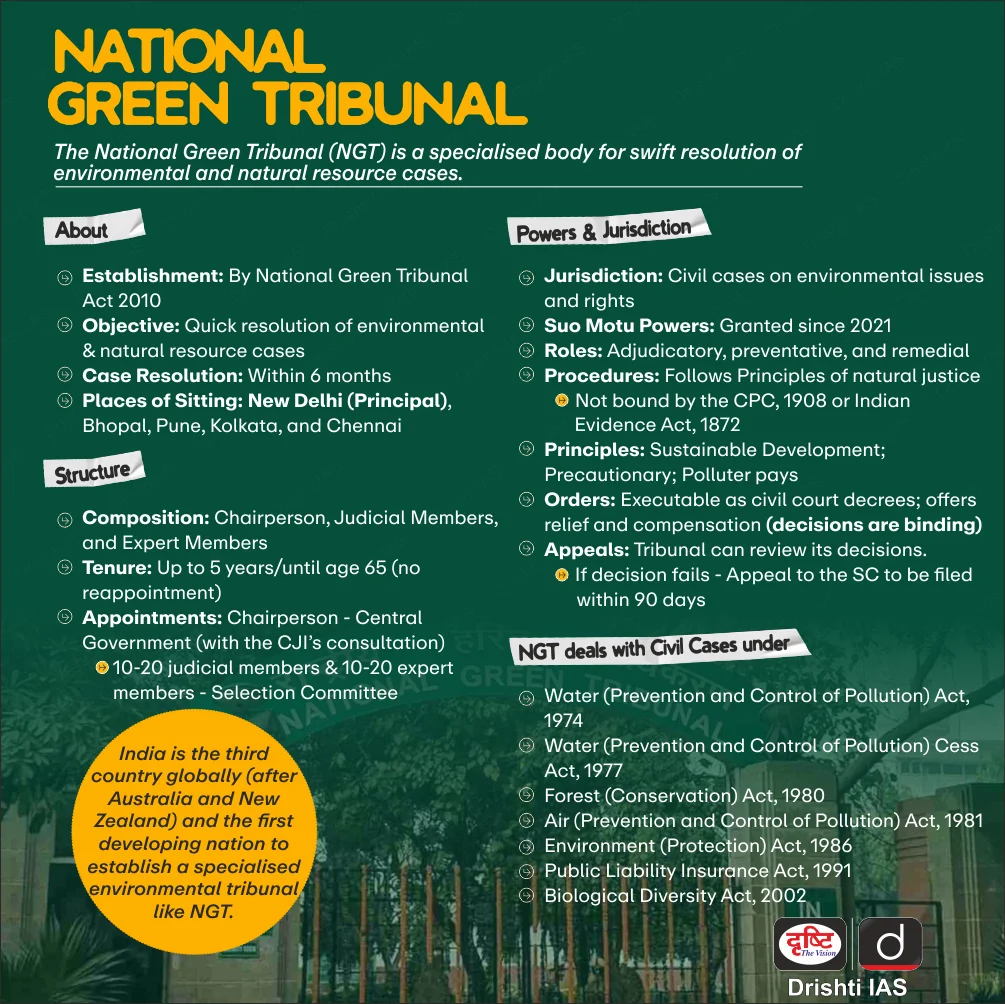NGT Flags Severe Chromium Contamination in Drinking Water | 14 Nov 2025
The National Green Tribunal (NGT) has raised serious concerns over the lack of adequate safe drinking water in chromium-contaminated regions of Uttar Pradesh, directing the State government to ensure immediate and sufficient water supply.
- Chromium (Cr) is a potentially toxic metal occurring in water and groundwater as a result of natural and anthropogenic sources.
- Hexavalent form Cr(VI) is highly toxic, its exposure can cause severe health problems, including skin disorders, respiratory issues, and cancer.
- However, trivalent chromium (Cr(III)) is considered essential in trace amounts for the normal nutrition of humans and animals.
- Sources of Chromium Contamination in Water Bodies: Chromium contamination enters water bodies mainly through industrial effluents, mining waste, urban runoff, polluted irrigation, improper disposal, and accidental spills.
- Natural leaching from chromium-rich rocks also adds to groundwater pollution.
- Regulation: As per Indian standard (IS) 10500 for drinking water, the maximum permissible concentration of Cr(VI) in drinking water is 50 microgram per litre.
- Remedy for Chromium Pollution: Methods like adsorption (attachment of pollutants to surfaces), biosorption (use of biological materials to absorb pollutants), and ion exchange (replacing harmful ions with less toxic ones) are commonly used, though they vary in cost and efficiency.
- Advanced techniques, such as sunlight-driven photocatalysis with TiO2 nanoparticles, offer high efficiency in reducing Cr(VI) to Cr(III).
| Read more: India's Groundwater Contamination Crisis |

